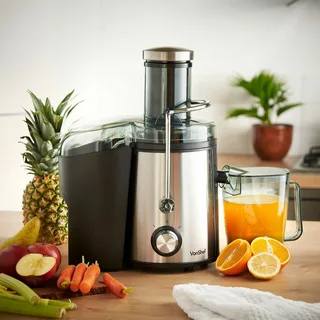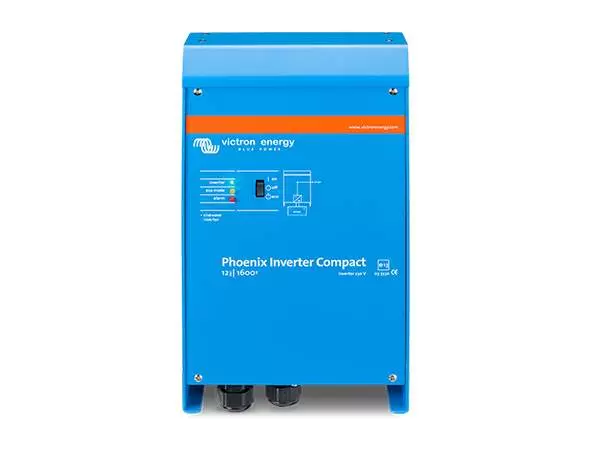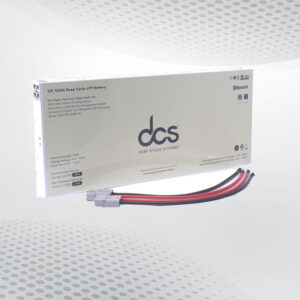The stainless steel juicer stands out for its durability and efficiency in kitchen appliances. These devices have become an essential part of modern kitchens, and they are known for their ability to extract juice from various fruits and vegetables easily. A stainless-steel juicer is a tool for those who prioritize health and a reliable ally for culinary enthusiasts who appreciate quality and longevity in their appliances.
The Benefits of Stainless Steel Juicers
Stainless steel juicers present several advantages over plastic alternatives, making them a preferred choice for amateur and professional juicers. These benefits range from durability and safety to aesthetic appeal, ensuring that stainless steel juicers are a superior investment for any kitchen.
Sturdy Construction and Longevity
One of the most significant advantages of stainless steel juicers is their sturdy construction, guaranteeing a long lifespan. Unlike plastic juicers that can wear out or degrade over time, stainless steel models are built to withstand frequent use without compromising their structural integrity. This durability makes them a wise investment, requiring fewer replacements and offering consistent performance over many years.
Resistance to Rust and Corrosion
Stainless steel juicers are highly resistant to rust and corrosion, ensuring they remain in top condition even when exposed to acidic fruits and vegetables. This resistance is particularly important for juicing citrus fruits, tomatoes, and other acidic produce, which can cause significant wear and tear on plastic components. Stainless steel’s ability to resist these corrosive elements means that the juicer maintains its functionality and appearance over time, providing reliable performance without the risk of degradation.
Non-Reactive Material for Healthier Juices
Another critical advantage of stainless steel is its non-reactive nature. Unlike some plastics, which can leach unwanted chemicals or impart flavors into the juice, stainless steel ensures that the purity and taste of the juice remain uncompromised. This non-reactivity results in a purer, healthier product, free from artificial tastes or potential health hazards associated with certain plastics. This feature is particularly appealing for health-conscious individuals, as it guarantees that the juice retains its natural flavors and nutritional benefits.
Enhanced Durability and Safety
The material’s inherent durability makes stainless steel juicers less likely to crack or break, a common issue with plastic models. This robustness extends the juicer’s lifespan and enhances safety by reducing the risk of parts failing during use. Stainless steel is less prone to damage from drops, impacts, and daily wear, ensuring the juicer remains safe and functional even in busy kitchen environments.
Sleek and Modern Aesthetic
In addition to their functional benefits, stainless steel juicers boast a sleek and modern appearance that adds a sophisticated touch to any kitchen. Their polished surfaces and contemporary design complement various décor styles, from minimalist and industrial to traditional and elegant. This aesthetic versatility makes stainless steel juicers an attractive addition to kitchen countertops, enhancing the overall visual appeal of the space.
Easy Maintenance and Hygiene
Stainless steel is also easier to clean and maintain compared to plastic. Its smooth, non-porous surface prevents the buildup of bacteria and stains, ensuring that the juicer remains hygienic with minimal effort. Most stainless steel juicers are dishwasher safe, further simplifying the cleaning process and making them more convenient for daily use.
Environmental Sustainability
Choosing a stainless-steel juicer can also be a more environmentally sustainable option. Stainless steel is fully recyclable, reducing the environmental impact of its production and disposal. In contrast, plastic juicers often contribute to plastic waste, a significant environmental concern. By opting for a stainless steel model, consumers can make a more eco-friendly choice that supports sustainability efforts.
Different Types of Stainless Steel Juicers
Stainless steel juicers come in various types, each tailored to specific juicing needs. Centrifugal juicers are known for their rapid operation, using a high-speed spinning blade to extract juice quickly, making them ideal for those who value speed and convenience. Masticating juicers, however, utilize a slow grinding process to crush fruits and vegetables, resulting in higher juice yields and better nutrient retention. These juicers are particularly effective for leafy greens and fibrous produce. Citrus juicers, designed specifically for citrus fruits, operate with minimal effort, efficiently extracting juice while preserving the fruit’s natural flavors and nutrients.
Key Features to Look for in a Stainless Steel Juicer
When examining the key features of a stainless-steel juicer, several essential elements that enhance performance, convenience, and safety stand out. These features ensure that the juicer delivers high-quality juice and provides a user-friendly experience.
Powerful Motor for Efficient Juicing
A powerful motor is a cornerstone of any high-quality stainless-steel juicer. It is essential for effortlessly processing hard fruits and vegetables such as apples, carrots, and beets. A robust motor ensures that the juicer can easily handle various products, delivering smooth and consistent juice without straining or overheating. This capability is particularly important for users who regularly juice dense or fibrous ingredients, as it guarantees efficient extraction and reduces the time required to produce a batch of juice.
Wide Feeding Chute for Convenience
Including a wide feeding chute significantly enhances the juicing experience by reducing the need for extensive pre-cutting of fruits and vegetables. This feature saves valuable preparation time, allowing users to place whole or large pieces of produce directly into the juicer. A wide feeding chute also minimizes the hassle of stopping mid-process from chopping ingredients, making the juicing process more streamlined and efficient. This convenience is especially beneficial for busy people who seek quick and easy ways to incorporate fresh juice into their daily routines.
Easy Disassembly and Cleaning
Disassembling and cleaning the juicer easily is crucial for maintaining hygiene and ensuring the appliance’s longevity. Stainless steel juicers are designed for user convenience, featuring components that can be quickly taken apart and rinsed or washed easily. Easy cleaning not only enhances user experience by reducing the effort required to maintain the juicer but also ensures that the appliance remains sanitary, preventing the buildup of bacteria and residue. This feature is essential for those who prioritize cleanliness and seek a hassle-free cleaning process.
Variable Speed Settings for Optimal Juice Extraction
Variable speed settings are highly beneficial for accommodating a range of produce types, ensuring optimal juice extraction. Different fruits and vegetables require varying speeds to achieve the best results; softer produce like berries and leafy greens need slower speeds to preserve their delicate flavors and nutrients, while harder items like carrots and apples benefit from higher speeds for efficient processing. By offering adjustable speed options, stainless steel juicers provide versatility and control, allowing users to customize the juicing process based on the specific ingredients used.
Non-Slip Feet for Stability
Non-slip feet provide essential stability during operation, preventing the juicer from moving or slipping on the countertop. This feature enhances safety by reducing the risk of accidents, especially when processing large quantities of produce that can create significant force and vibration. The stable operation ensures a smoother juicing experience and protects the appliance and the user from mishaps.
Safety Locking Arm for Enhanced Security
A safety locking arm adds an extra layer of security by ensuring that the juicer operates only when properly assembled. This feature prevents accidental spills and protects users from moving parts during operation. The safety locking arm is important for households with children or those who prioritize appliance safety, providing peace of mind while using the juicer.
How to Properly Clean and Maintain Your Stainless Steel Juicer
Maintaining a stainless steel juicer involves several essential steps to ensure longevity and performance. After each use, disassemble the juicer carefully, separating all parts. Rinse each component under running water to remove any pulp or residue. For the mesh filter and other intricate parts, a soft brush should gently scrub away any debris. Harsh detergents and abrasive materials should be avoided as they can damage the stainless steel finish.
Periodically, soak the removable parts in warm, soapy water to dissolve any buildup. Ensure all parts are thoroughly dried before reassembly to prevent moisture damage. Regular inspection for wear and tear is crucial, and any damaged components should be replaced promptly. Storing the juicer in a clean, dry place when not in use, which will further protect it from potential harm.
Tips for Maximising the Longevity of Your Juicer
Proper usage and maintenance are key to maximizing the longevity of a stainless-steel juicer. It’s crucial to adhere to the manufacturer’s guidelines, especially regarding load capacity and recommended operating times. Lubricating moving parts, if specified by the manufacturer, can prevent undue wear. Ensuring the juicer is stored in a dry, clean environment minimizes the risk of moisture damage. Regular maintenance checks can help identify and address emerging issues before they become problematic. Avoiding harsh chemicals during cleaning preserves the integrity of the stainless steel components. Also, handling the juicer carefully, especially during assembly and disassembly, can prevent accidental damage.
Common Misconceptions about Stainless Steel Juicers
Stainless steel juicers often need clarification. One prevalent myth is that they are challenging to clean; however, many models are designed for straightforward disassembly and cleaning. Another misconception concerns their noise level. Technology advancements have significantly reduced operational noise, making modern stainless steel juicers much quieter. Some people also believe that these juicers are prohibitively expensive.
While they may have a higher initial cost, their durability and longevity offer excellent value over time. Additionally, there’s a belief that stainless steel juicers can’t handle diverse types of produce. On the contrary, various models are specifically designed to efficiently juice everything from hard vegetables to soft fruits and leafy greens.
How to Choose the Right Stainless Steel Juicer
Selecting an appropriate stainless-steel juicer requires carefully evaluating one’s juicing habits and preferences. The types of produce intended for juicing play a significant role in determining the best model. For example, those who frequently juice leafy greens might benefit more from a masticating juicer, while individuals who prioritize speed may prefer a centrifugal model. Budget constraints are another crucial consideration, as stainless steel juicers vary in price. Although they may require a higher initial investment, their long-term durability often translates to greater value over time.
Additionally, reviews and ratings from other users can provide valuable insights into the performance and reliability of different models. Ergonomic features, such as ease of assembly and cleaning, can also influence the decision, ensuring that the juicer is convenient to use regularly. It’s advisable to explore a few models in person to gauge their build quality and user-friendliness.
Tips for Maximising Juicing Efficiency
Preparation is key to optimize the efficiency of a stainless-steel juicer. Cutting fruits and vegetables into smaller pieces can ease the juicing process and reduce strain on the motor. Alternating between soft and hard produce can help maintain a steady flow and prevent clogging, ensuring a smoother operation. Adjusting the speed settings to match the type of juiced produce can also improve juice yield and quality. For instance, harder vegetables may require higher speeds, while softer fruits might benefit from slower settings.
Keeping the juicer components correctly assembled and tightly secured can prevent leaks and ensure consistent performance. Regularly inspecting and cleaning the mesh filter will also aid in maintaining maximum efficiency by preventing pulp buildup that can hinder juice extraction? Lastly, ensuring the feeding chute is adequately filled can prevent blockages and facilitate a more efficient juicing process.
Conclusion
Stainless steel juicers offer durability, efficiency, and health benefits, making them an indispensable asset in the modern kitchen. Their robust construction ensures longevity, while their resistance to rust and corrosion maintains the quality of the juice produced. The ability to handle a variety of fruits and vegetables with ease further enhances their practicality. Moreover, the non-reactive nature of stainless steel preserves the natural flavors and nutrients in the juice, contributing to a healthier lifestyle. Understanding the different types available, along with their specific features and maintenance needs, helps users make an informed choice and enjoy the full benefits of these reliable appliances.
FAQs
1. Are stainless steel juicers dishwasher safe?
While many parts of stainless steel juicers are designed to be dishwasher safe, it is important to check the manufacturer’s guidelines to ensure proper care. Some components may need to be hand-washed to maintain their integrity and longevity.
2. Do stainless steel juicers retain the flavor of the juice?
Stainless steel juicers excel in preserving the natural flavor of the juice. This is because stainless steel is a non-reactive material, ensuring the juice remains free from metallic or chemical tastes.
3. Can stainless steel juicers handle leafy greens?
Yes, masticating stainless steel juicers are particularly adept at processing leafy greens and fibrous vegetables. Their slow grinding mechanism allows efficient juice extraction while retaining the nutrients and natural taste.
4. Is it necessary to peel fruits and vegetables before juicing?
Peeling fruits and vegetables is not always necessary but can benefit certain types. For example, peeling citrus fruits can help avoid a bitter taste, while removing the skin from waxed produce can eliminate unwanted residues.
5. How often should the juicer be cleaned?
Cleaning the juicer after each use is recommended to maintain hygiene and prevent residue buildup. Regular cleaning ensures that the juicer operates efficiently and prolongs its lifespan.




